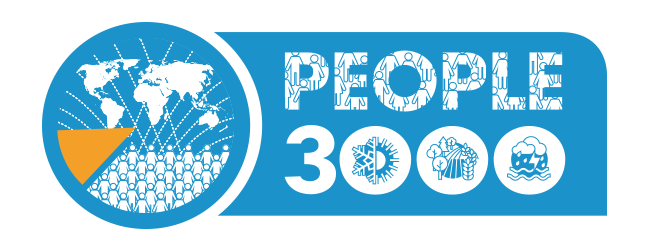- Home
- Publications
- PAGES Magazine
- Modeling Long-term Human–environment Feedback Loops During The Holocene
Modeling long-term human–environment feedback loops during the Holocene
Gayo EM, Lima M, Freeman J, Robinson E and Latorre C
Past Global Changes Magazine
29(2)
104
2021
Eugenia M. Gayo![]() 1,2, M. Lima
1,2, M. Lima![]() 1,3, J. Freeman
1,3, J. Freeman![]() 4, E. Robinson
4, E. Robinson![]() 4 and C. Latorre
4 and C. Latorre![]() 2,3
2,3
Online, 25-26 March 2021
The PEOPLE 3000 (pastglobalchanges.org/people3000) working group aims to understand how the interplay between human population growth, upscaling in social complexity, and climate variability might have driven resilience or collapse of socio-ecological systems during the Holocene. By integrating long-term timeseries for ecological, climatic, and demographic trends under common mathematical frameworks, we formally evaluate convergences/divergences in feedback loops between biophysical and social systems in different regions of the globe. We are thereby interested in exploring explanations beyond statistical correlations between human population change, climate variability, and anthropogenic land use, based on modeling theoretical climate–ecosystem–population feedback relationships.
One of the modeling approaches that we have developed to explain the trajectory of Holocene SES is based on the Population Dynamic Theory (PDT), which allows us to test empirically for the interplay between climate, ecosystem and population processes. PDT proposes that the impact of climate variability on human populations cannot be evaluated independently of demographic levels. Simply put, climatic conditions affect food production, which in turn set the carrying capacity (k). Clearly, unfavorable conditions necessarily affect k through resource limitation, but if the population/food production ratio is defining the per-capita share of resources as well as competition strength, the availability of a limiting factor will decrease regardless of the effect of climate on food production. This implies that even small changes in a relevant climate variable might trigger disproportionate impacts in population growth rates. We have begun to explore this kind of dynamic in several past populations from the Americas and Polynesia (Bird et al. 2020; Lima et al. 2020).
Our last workshop before the final PEOPLE 3000 synthesis, "Understanding long-term human-environment feedback loops through the integration of archaeology, paleoclimate and ecological models" (pastglobalchanges.org/calendar/26995) was held virtually due to restrictions of the ongoing COVID-19 pandemic. This activity aimed to expand our number of case studies by establishing collaborative strategies to integrate ecological, climate and demographic proxy data into a PDT framework for addressing the question: Does human population size and/or rates of change better correlate with climate driven changes in ecosystem structure, diversity or functionality?
Through keynote and flash-poster presentations, we discussed approaches for extracting refined paleodemographic signals from archaeological radiocarbon timeseries as well as trends for anthropogenic land-use changes from paleoecological archives. We established synergies with researchers from other complementary initiatives, e.g. LandCover6k (pastglobalchanges.org/landcover6k), Paleoclimate Modelling Intercomparison Project (PMIP; pmip.lsce.ipsl.fr) and Humans on Planet Earth (HOPE; www.uib.no/en/rg/EECRG/107501/hope) for assessing human-environment feedback loops based on the integration of our PEOPLE 3000 radiocarbon database (Bird et al. 2021) and global paleoenvironmental datasets collated previously by our collaborators.
A manuscript has been outlined that will allow us to explore relationships between technological innovations and population growth in past agrarian societies from around the world. For the case presented in Figure 1, accelerated growth rates occurred as population sizes increased in the inland Atacama Desert and the adoption of agriculture spurred on new forms of cooperation among individuals (i.e. pottery, metal-working, irrigation, pastoralism). Nevertheless, as population sizes approached the higher k set by agriculture, growth rates started to decrease due to the interplay between population levels and increased competition strength.
Breakout sessions on the second day were dedicated to discussing the future of PEOPLE 3000. Directions for a new Phase 2, which launched in August 2021, focus on exploring coevolutionary relationships between social organization, changes in human populations, and disturbance regimes over the Holocene. Phase 2 will broaden our number of case studies by including early-career researchers from traditionally under-represented regions in paleoscience that attended the workshop, and delve further into new computational tools available for the paleoenvironmental record (e.g. Neotoma). New collaborations with other initiatives such as LandCover6k, PMIP and HOPE will help develop novel synergies to examine mechanisms proposed to explain the variable deep histories of resilience (or lack thereof) observed in past socio-ecological systems.
Acknowledgements
PAGES, Fondecyt 1180121, ANID_PIA AFB170008, ANID_Millenium Initiative UPWELL NCN19_153, ANID_PIA/BASAL FB0002
Affiliations
1Center of Applied Ecology and Sustainability (CAPES), Pontifical Catholic University of Chile, Santiago, Chile
2Millennium Nucleus UPWELL, Concepcion, Chile
3Department of Ecology, Pontifical Catholic University of Chile, Santiago, Chile
4Anthropology Program, Utah State University, Logan, UT, USA
contact
Eugenia M. Gayo: emgayo uc.cl
uc.cl
references
Bird D et al. (2020) Holocene 30: 1345-1359

